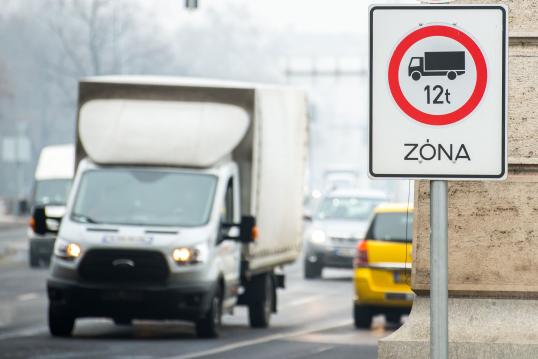- Topic
- Urban freight/city logistics
- Urban mobility planning
- Country
- Hungary
- Resource type
- Case study
first published 11/04/2017
Budapest SUMP, the Balázs Mór Plan, sets the mobility priorities for the years to come in the Hungarian Capital. The mobility of people is at the core of the plan. Budapest SUMP stood out at the last EU SUMP Award competition for making the strategy for the transport of goods an important part of the Balázs Mór Plan. Budapest was indeed one of the three finalists of the 5th EU SUMP Award on the theme of freight.
Context
The Balázs Mór Plan has been officially adopted in summer 2014 and has now entered in the implementation phase. In harmony with the SUMP, two freight and urban logistics related documents define the operative rules and strategies for urban freight transport in Budapest, the Freight Transport Strategy for Budapest, and the City Logistics Concept (CLC).
While the Freight Transport Strategy is a regulatory document which specifies the accessibility rules for freight vehicles, the CLC is a more strategic document - based on the Balázs Mór Plan – which sets the vision for services, connections and regulations for freight in Budapest. The main goals of the Balázs Mór Plan and the attached documents for urban freight is to improve the competitiveness of the city and its region and also to contribute to establishing a sustainable, liveable, attractive and healthy urban environment.
In action
To achieve this overall objective, the Budapest SUMP sets four strategic goals for urban freight: more connections; better services; attractive vehicles; and efficient governance. The four strategic operational goals are to be reached via the implementation of specific measures. The development of more connections is expected via the spreading of intelligent technologies (ITS) and the creation and promotion of urban consolidation centres.
Under ‘better services’, the use of IT technologies aslo allows the collection of data (via e.g. Wifi, dynamic traffic information services) and the management of the freight traffic (via e.g. dynamic parking system, dynamic traffic control). This can, in turn, help tackle problems like congestion or pollutant emissions. To encourage the use of cleaner freight vehicles, the Freight Transport Strategy limits the access to certain roads to the least clean vehicles. The scheme is based on the EURO classification and restricts over time the access to more and more roads to the vehicles which exceed certain EURO levels.
Finally, the efficient governance is expected to help shifting the freight traffic to chosen urban areas and roads at specific times of the day (off-peak deliveries). In Budapest, both the use of IT technologies and the implementation of a strict and progressive urban access restriction scheme for freight vehicles are at the core of the strategy. The combination of the two types of measures are expected to help the freight sector develop and also to decrease its negative impacts which, identified for the development of the Balázs Mór Plan, include: deteriorating living conditions in urban areas; a lot of road accidents; air pollution; noise pollution; deteriorating environmental quality; congestion, congested roads; and increasing pollutant emissions.
Results
Although Budapest is starting the implementation of the measures contained within the Balázs Mór Plan, some results have already been observed by BKK, the organisation in charge of the SUMP development and implementation. The different measures taken to decrease the adverse impacts of freight, including the implementation of the access restriction scheme has produced some effects.
Several private sector delivery companies started to use cargo-bicycles for logistics transportation, especially for short distances in the Budapest inner city. A part of the road traffic has also been shifted to the waterways, on the river Danube. This is the case for instance for the transport of petrol. The public sector is also concerned as the redistribution of the bicycles of the public bike sharing scheme is made by… bike.
Challenges, opportunities and transferability
As demonstrated by the selection of Budapest among the three finalists for the 5th EU SUMP Award on the topic of urban freight, the planning approach of Budapest is considered by the jury of the award as particularly good. The jury also valued the good integration of goods transport of in the overall mobility planning strategy of Budapest.
Drafting the Freight Transport Strategy and the City Logistics Concept in conjunction with the Balázs Mór Plan proved to be successful. Therefore, the inclusion of a strategy on freight in the overall planning approach is a method that Budapset would advise other city to follow for their SUMP development. Additionally, the jury of the EU SUMP award appreciated that Budapest set ambitious goals and selected methodically measures to achieve these goals; giving a coherence to the overall planning approach.

